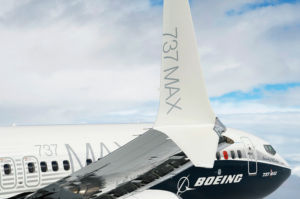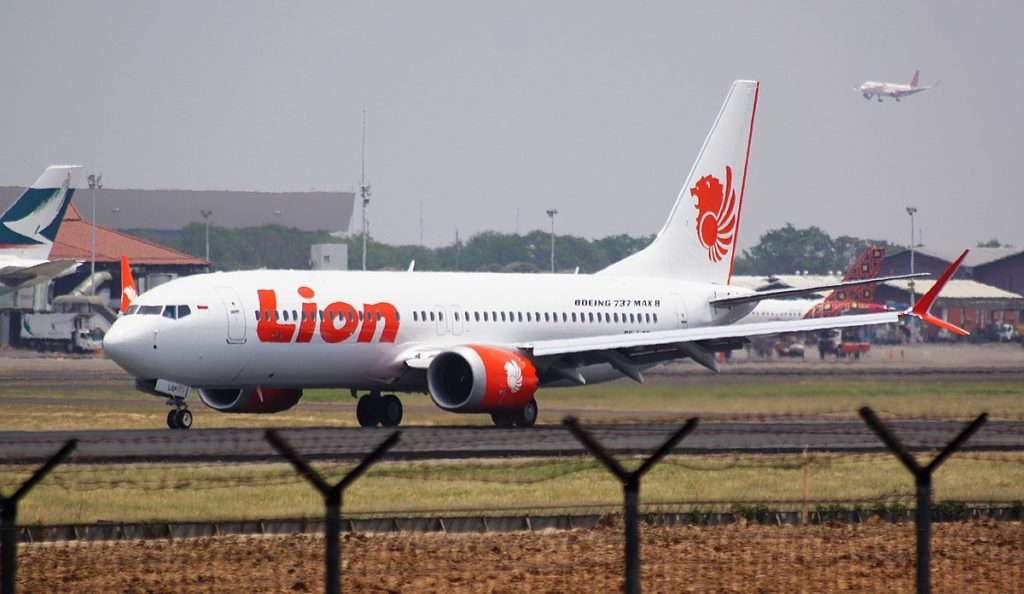Leeham News and Analysis
There's more to real news than a news release.
This is not simple
By John Cox
May 20, 2019, © Leeham News: The latest version of the Boeing 737 is the MAX. It has new engines, new flight deck screens and the latest in-flight entertainment systems for passengers. It is quite a change from the 737-100 that first entered service 51 years earlier in 1968.
After flying operationally for 15 months (May 2017 to October 2018), there was a loss of a 737 MAX 8 in Indonesia. Five months later, another MAX 8 crashed. Something was wrong. How could such a proven workhorse have two accidents in such a short time in very similar circumstances?
Pontifications: Mandate sim time for MAX return to the skies
 May 20, 2019, © Leeham News: “Safety is our top priority.”
May 20, 2019, © Leeham News: “Safety is our top priority.”
So says Dennis Muilenburg, CEO of The Boeing Co.
As stories drip, drip, drip out in The Seattle Times, New York Times, Washington Post, The Wall Street Journal and other media about Boeing’s development process of the 737 MAX, one can’t help but wonder otherwise.
Pilots weren’t told of MCAS. Switch functions were changed. Warning lights were inoperative, but the pilot manuals indicated otherwise. Boeing discovered one problem but didn’t tell the FAA for a year. A single point of failure. The absence of information about the MCAS in the pilot manual. A second software glitch is found in the flight control system. Boeing said it didn’t want to “inundate” pilots with information. Blaming the pilots for the accidents.
- Our paywall will be posted later than usual. Airbus Innovation Days begin today and we’ll be reporting from Toulouse.
- Ethiopian MAX crash simulations stun pilots: Aviation Week.
- MAX simulators didn’t replicate MCAS conditions: New York Times.
- Boeing corrects flawed simulator software: Reuters
- 737NG, MAX simulators were supposed to be the same: Leeham News.
But nothing is Boeing’s fault. There was no failure, no gap, no technical problem. Or so says Muilenburg.
Yet within one week of the Lion Air accident, in which Boeing pointed the finger at the pilots, Boeing was diving into the MCAS design.
It goes on and on.
If “safety is our top priority,” it’s time for Boeing to man up and do the right thing, regardless of the legal liabilities.
It’s time to back simulator training on MCAS before pilots can fly the MAX. Read more
How Boeing named, promoted the MAX in early days
Subscription Required
Now open to all readers
Introduction
May 16, 2019, © Leeham News: As a Congressional investigation into the Federal Aviation Administration’s oversight and certification of the Boeing 737 MAX development ramps up, LNA dipped into its archives to review what the company was telling the public.
 The MAX was hastily launched in July 2011, when American Airlines informed Boeing it was about to place a record-setting order for nearly 500 airplanes. Airbus was lined up to snare it all with the A320ceo and neo families unless Boeing could make a credible offer.
The MAX was hastily launched in July 2011, when American Airlines informed Boeing it was about to place a record-setting order for nearly 500 airplanes. Airbus was lined up to snare it all with the A320ceo and neo families unless Boeing could make a credible offer.
Within 48 hours, Jim McNerney, then-CEO of Boeing, made the decision to launch the re-engined design of the 737. This later was branded the MAX.
It was a plane Boeing designed but didn’t want to build.
Once launched, Boeing had to play catch up to Airbus, which had a seven month lead with its neo. The public messaging was long on bashing the A320. There were few technical details presented in public, but the basis for what’s become in focus today after two fatal crashes was there.
Summary
- Boeing promoted commonality between NG and MAX.
- Making a virtue of basic design.
- Integrating the larger engines.
- Promoting the same simulators.
Boeing to support MAX simulator demo (Update)
- Boeing CFO meetings show confidence in recertifying MAX sooner than later.
- Returning to pre-grounding production rates will be “gradual.”
- FAA clearance anticipated in 4-5 weeks.
- Boeing will urge pilots, regulators to witness simulations of MCAS flight characteristics.
- NMA, 777X delays likely.
UPDATE: Cowen & Co issued a revised note today, with new language concerning simulations of the MCAS flying characteristics. Boeing is not urging sim training. Rather, it is urging regulators and pilots to go to sites where MAX MCAS flying characteristics may be witnessed and understood. Cowen tells LNA it misunderstood what Boeing said.
May 10, 2019, © Leeham News: In a sign that Boeing is confident it’s on track with the fix of the MCAS for its 737 MAX, the chief financial officer of the company Wednesday and Thursday made the rounds in New York and Boston with aerospace analysts and key institutional investors.
Coming out of these meetings is news that Boeing will support simulator training for pilots to fully understand MAX handling characteristics, one analyst reports.
Greg Smith gave the financial analysts Boeing’s latest thinking about progress in returning the MAX to the skies across the globe. He also said Boeing is using the production slowdown (from 52/mo to 42/mo) to allow suppliers, notably engine maker CFM, to catch up from their own delays and strains. The suppliers maintained the 52/mo rate.
Spirit Aerosystems said it hopes that CFM, which has been running two-three weeks late with engines–will return to rate 52 in June. This is faster than suppliers were told by Boeing when the rate was cut in April. At that time, June’s rate ramp up was goal was 47/mo, with 52 in August and 57/mo in September. Boeing last year planned rate 57 in June this year.
FAA prepared to act alone to lift MAX grounding
Subscription Required
Introduction
May 9, 2019, © Leeham News: Boeing hopes that the Federal Aviation Administration will lift its grounding order for the 737 MAX as early as next month. It is prepared to act alone, LNA has confirmed, rather than waiting for a consensus from global regulations.
Some airlines and aerospace financial analysts, as well as others like LNA, consultants and observers, wonder if global regulators will agree with the FAA or move more slowly.
 The FAA already initially concluded simulator training won’t be necessary for pilots to understand the now-infamous MCAS system and its upgrades. After one round of comments for the proposal, which is common in the FAA process, the agency is accepting a second round of comments.
The FAA already initially concluded simulator training won’t be necessary for pilots to understand the now-infamous MCAS system and its upgrades. After one round of comments for the proposal, which is common in the FAA process, the agency is accepting a second round of comments.
Transport Canada, however, already indicated it wants simulator training before lifting the grounding order affecting nearly four dozen MAXes at Canada’s two largest airlines, Air Canada and Westjet.
Other agencies haven’t publicly weighed in.
There were some reports the FAA may wait for all regulators to agree before lifting the grounding order.
But LNA confirmed the FAA will act on its own review, while fully briefing global regulators, who will make their own decisions.
Summary
- “Regulatory power grab” in focus, writes aerospace analyst.
- Some hope for early lifting of grounding order, others don’t see return to service until September.
- Is the Joint Authorities Technical Review panel the precursor to a new global regulator for certification?
Boeing customer compensation for MAX already at $1bn and climbing, estimates aviation lawyer
 May 2, 2019, © Leeham News, New York: Boeing faces huge claims from airlines with grounded 737 MAXes, the amount of which will depend on the time the airplanes are out of service, an aviation lawyer tells LNA.
May 2, 2019, © Leeham News, New York: Boeing faces huge claims from airlines with grounded 737 MAXes, the amount of which will depend on the time the airplanes are out of service, an aviation lawyer tells LNA.
The lawyer, who is not involved in any litigation from the Lion Air and Ethiopian Airlines MAX 8 crashes, has reviewed scores of Boeing purchase contracts in the ordinary course of his practice. It’s based on terms and conditions under the Service Life clause that he concludes Boeing could face about $1bn in claims for a grounding lasting five months—or until mid-August, as three key US airlines estimate before the MAX returns to service in the US.
The amount climbs the longer the groundings are in place but could be smaller if the global grounding is lifted sooner.
MAX impact on Boeing NMA beginning to emerge
Subscription Required
Introduction
May 2, 2019, © Leeham News: There was indication last week Boeing’s decision on whether to approve the New Midmarket Airplane program will slide.
CEO Dennis Muilenburg said on the company’s first quarter earnings call the focus is returning the grounded 737 MAX to service.
A decision on authorizing the sales force to offer the NMA for sale is ambiguous. For the first time, targeting 2025 for entry into service appears to be acknowledged as iffy.
The statements confirm LNA’s analysis and our reports that the 2025 EIS is unlike.
Summary
- Advanced manufacturing is key to NMA production, but all elements need to fall into place—a “production moonshot.”
- For more than a year, LNA and others predicted the NMA EIS in 2025 is not possible.
- Engines won’t be ready by 2025 EIS. See here and here from March 2018.
- Latest woes from CFM on the LEAP add to uncertainty; CFM is the favorite for NMA. See here.
- Engine selection by Boeing put off until after MAX problems solved, grounding lifted.
- Authority to Offer for sale at Paris Air Show unlikely and 2025 EIS now in doubt.
Pontifications: “We own it, but…”
April 29, 2019, © Leeham News: Boeing got roundly thumped for blaming the pilots in the Lion Air flight 610 crash involving the 737 MAX last October.
It took months before Boeing CEO Dennis Muilenburg issued a video in which, among other things, he said, “We own it.” He was referring to safety of the MAX.
This was widely interpreted as Boeing stepping up and taking responsibility for at least some of the causes of the Lion Air and Ethiopian Airlines crashes.
Last Wednesday, he took it all back.
On the first quarter earnings call, Muilenburg denied there was any “technical slip or gap” in designing the now famous MCAS system. He said “actions not taken” contributed to the crash, a thinly veiled reference once again to pilot error. (More on this below.)
Training is a factor in the MAX crashes
April 15, 2019, © Leeham News: This column will no doubt light up the blog-o-sphere.
There’s been a major debate going on since the crash of Lion Air JT610, the Boeing 737-8 MAX that immediately became a huge controversy.
Boeing immediately blamed the pilots. So did some pilots of some US airlines, who said if the Lion Air crew had just flown the airplane, it wouldn’t have crashed. It was a training issue, some said.
Having got tremendous blow back over Lion Air, Boeing publicly held its tongue when Ethiopian Airlines flight ET302 crashed five months later.
Still, Boeing officials quietly still said there was nothing wrong with the airplane.
Some US and Canadian pilots maintained, publicly and privately, that a lack of training and pilot skills in the Third World was responsible.
They’re not entirely wrong.






